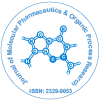Removal of Pharmaceutically Active Compounds from Aqueous Solutions
Received Date: Nov 01, 2024 / Published Date: Nov 29, 2024
Abstract
Pharmaceutically Active Compounds (PhACs) are increasingly detected in aquatic environments due to human and animal consumption of pharmaceutical products, leading to environmental contamination. These compounds, which include antibiotics, analgesics, and anti-inflammatory drugs, can persist in water systems and pose potential threats to aquatic life and human health. This article reviews the various methods for the removal of PhACs from aqueous solutions, with a focus on adsorption, membrane filtration, biodegradation, and advanced oxidation processes. Each technique’s advantages, limitations, and effectiveness are discussed, highlighting their relevance to real-world applications. Additionally, recent advancements in hybrid processes that combine multiple removal techniques are explored. The article concludes with an assessment of future research directions needed to improve the efficiency and sustainability of PhACs removal technologies.
Citation: Fatoumata D (2024) Removal of Pharmaceutically Active Compounds from Aqueous Solutions. J Mol Pharm Org Process Res 12: 256.
Copyright: © 2024 Fatoumata D. This is an open-access article distributed under the terms of the Creative Commons Attribution License, which permits unrestricted use, distribution, and reproduction in any medium, provided the original author and source are credited.
Select your language of interest to view the total content in your interested language
Share This Article
Recommended Journals
Open Access Journals
Article Usage
- Total views: 694
- [From(publication date): 0-0 - Nov 03, 2025]
- Breakdown by view type
- HTML page views: 432
- PDF downloads: 262
